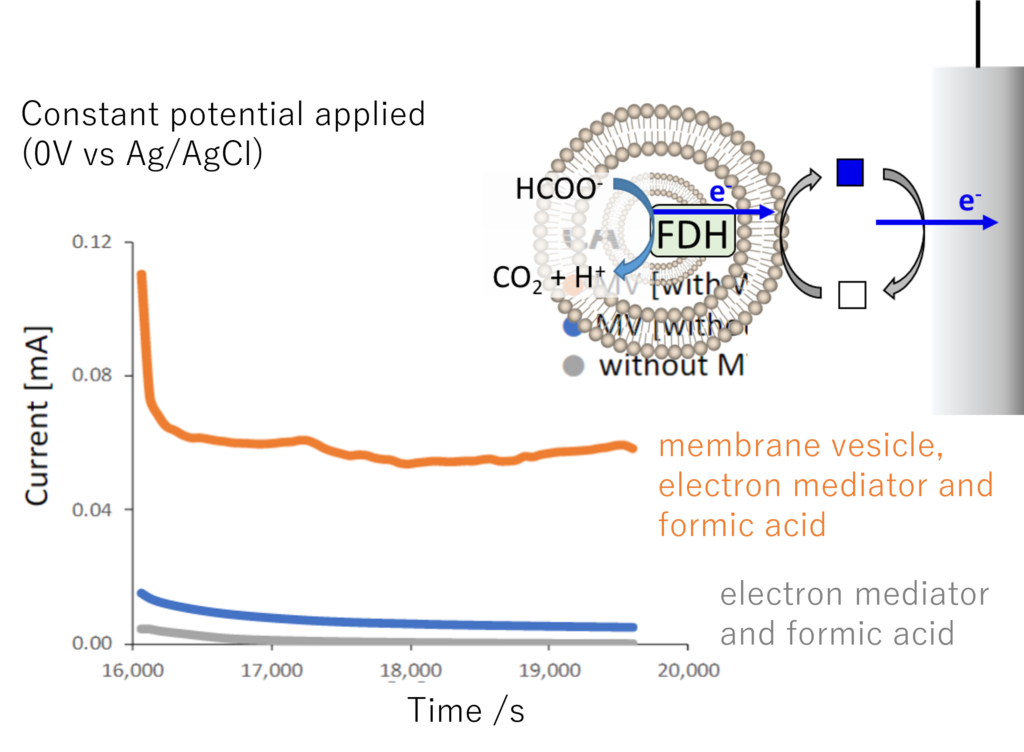Advantage and Core Benefit
- The cost and time required for isolation, purification, and preparation are greatly reduced because the mechanism of membrane vesicle formation in microorganisms is utilized.
- Wrapping the enzyme in membrane vesicles protects it and increases its durability and stability against external stimuli.
- Since membrane protein enzymes that could not be isolated before can be utilized with this technology, the development of new sensors is expected.
Technology Overview & Background
As one environmentally friendly and sustainable energy source, biosensors that utilize enzymes or microorganisms themselves as electrocatalysts for the conversion of chemical energy to electrical energy are being developed. However, enzymes are costly and time-consuming to isolate and purify, and have durability and stability problems, while microorganisms have problems such as difficulty in controlling growth and resistance by users, so not many have been put to practical use.
The inventor has developed a biosensor that uses membrane vesicles containing enzymes derived from microorganisms as electrocatalysts. The membrane vesicles can be easily produced by culturing microorganisms and then lysing them with a chemical agent, which significantly reduces cost and labor. The membrane vesicles also protect the enzyme, improving its durability and stability against external stimuli. Furthermore, membrane protein enzymes that could not be isolated before can be used in the membrane vesicles, and the development of biosensors that utilize new enzymes can be expected.
This technology can be applied not only to biosensors but also to biofuel cells.
Data
 |
- When membrane vesicles containing formate dehydrogenase (FDH) were
reacted with formic acid as a substrate in the presence of an electron mediator(methyl viologen), methyl viologen was reduced and steady current values were observed through the electrodes (figure).
Patents
pending
Principal Investigator & Academic Institution
Yoshihide TOKUNOU
(University of Tsukuba, Institute of Life and Environmental Sciences, Assistant Professor)
Expectations
We are looking for companies interested in this invention technology. We can disclose unpublished data, etc. by concluding a nondisclosure agreement with the University of Tsukuba, and we can also arrange a meeting with the inventor. If you have any questions or requests, please contact us anytime.
Project.HK-04878


